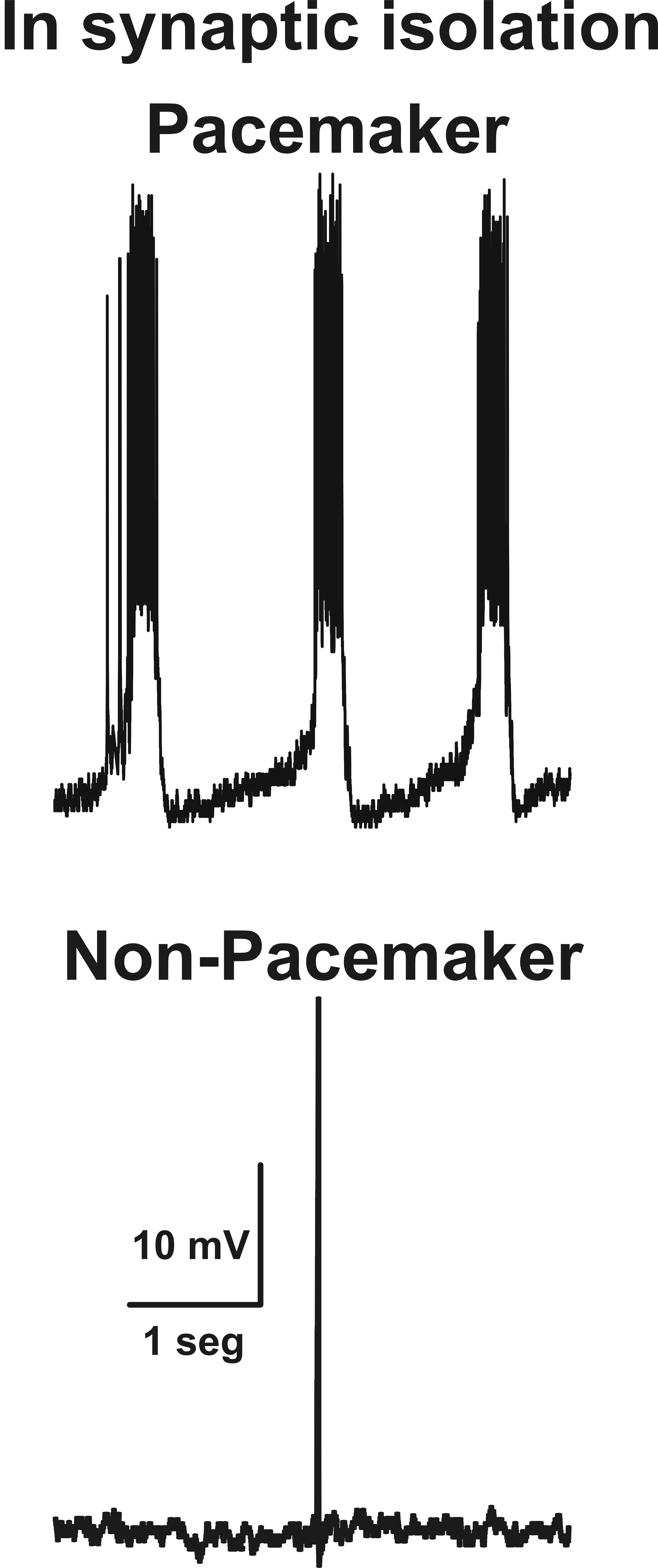Pacemaker Neurons are a type of Neuron that possess the innate ability to generate a rhythmic burst of activity. This is a crucial mechanism for several rhythmic motor activities, namely sleep, arousal, and memory.
They do this through a dynamic interplay of Ion Channels, second messengers, and synaptic inputs.
Pacemaker Neurons rely on Hyperpolarization Activated Channels (HCN channels) to generate this rhytmic activity. These channels open in response to membrane hyperpolarization, allowing a mix of Na+/K+ current to depolarize the cell, and thus contributing to the pacemaker activity.

There are actually several kinds of pacemaker cells, namely ones that can by found in the heart and gut for controlling both the rhythm of your heartbeat and also you gut contractions. However, these cells are muscle cells rather than neurons, but the use of Hyperpolarization Activated Channels as the primary mechanism behind the “pacemaking” is consistent across all forms of this cell.